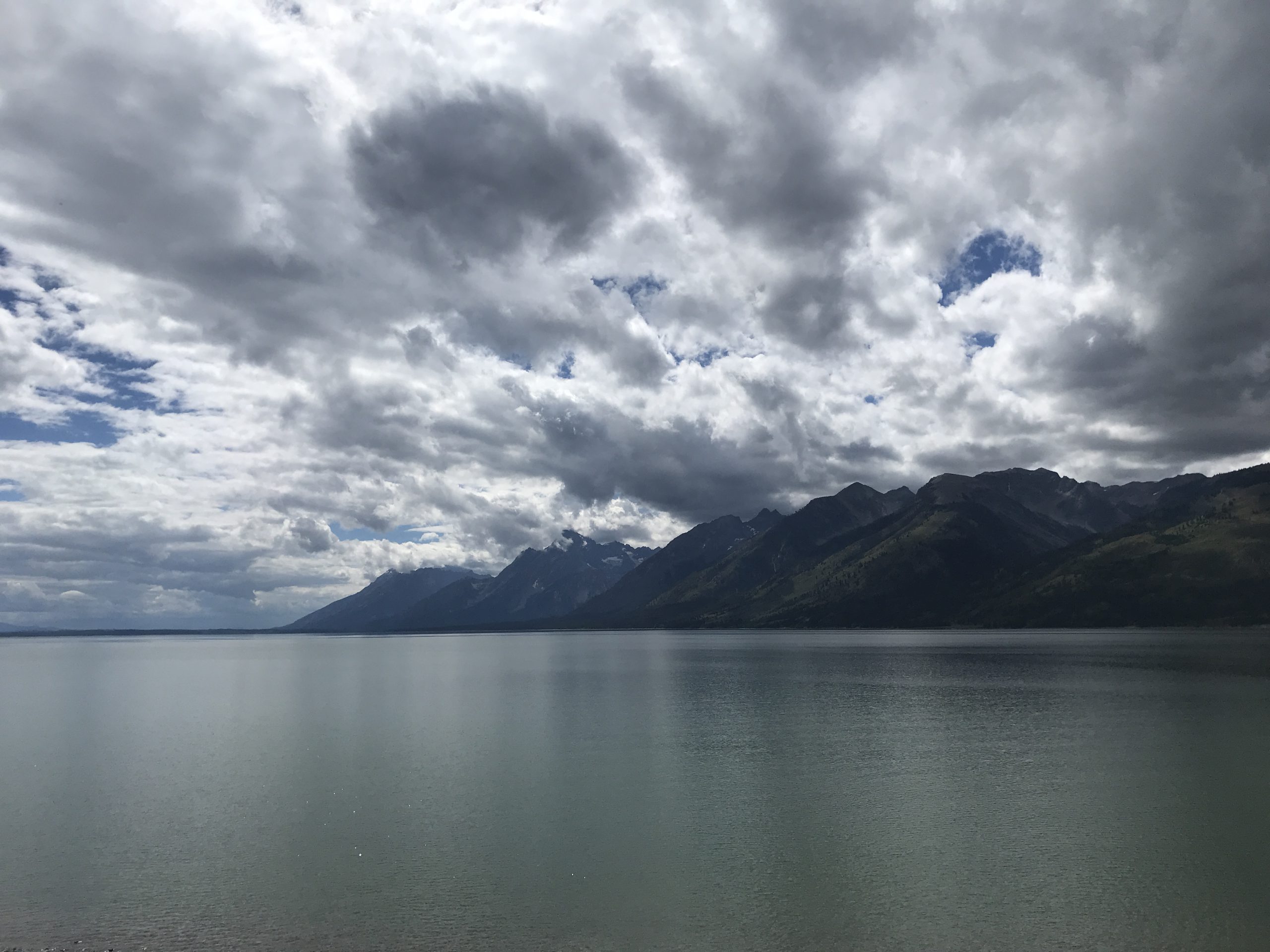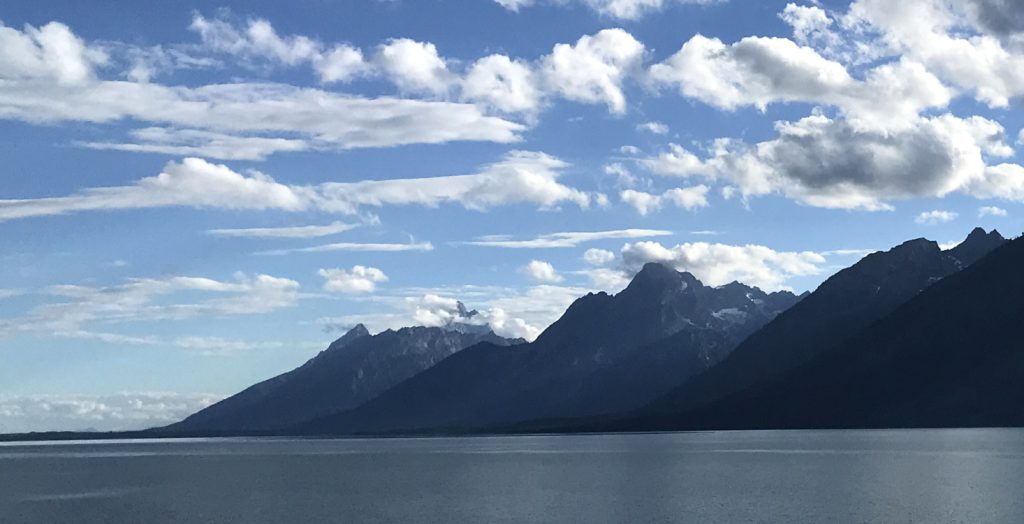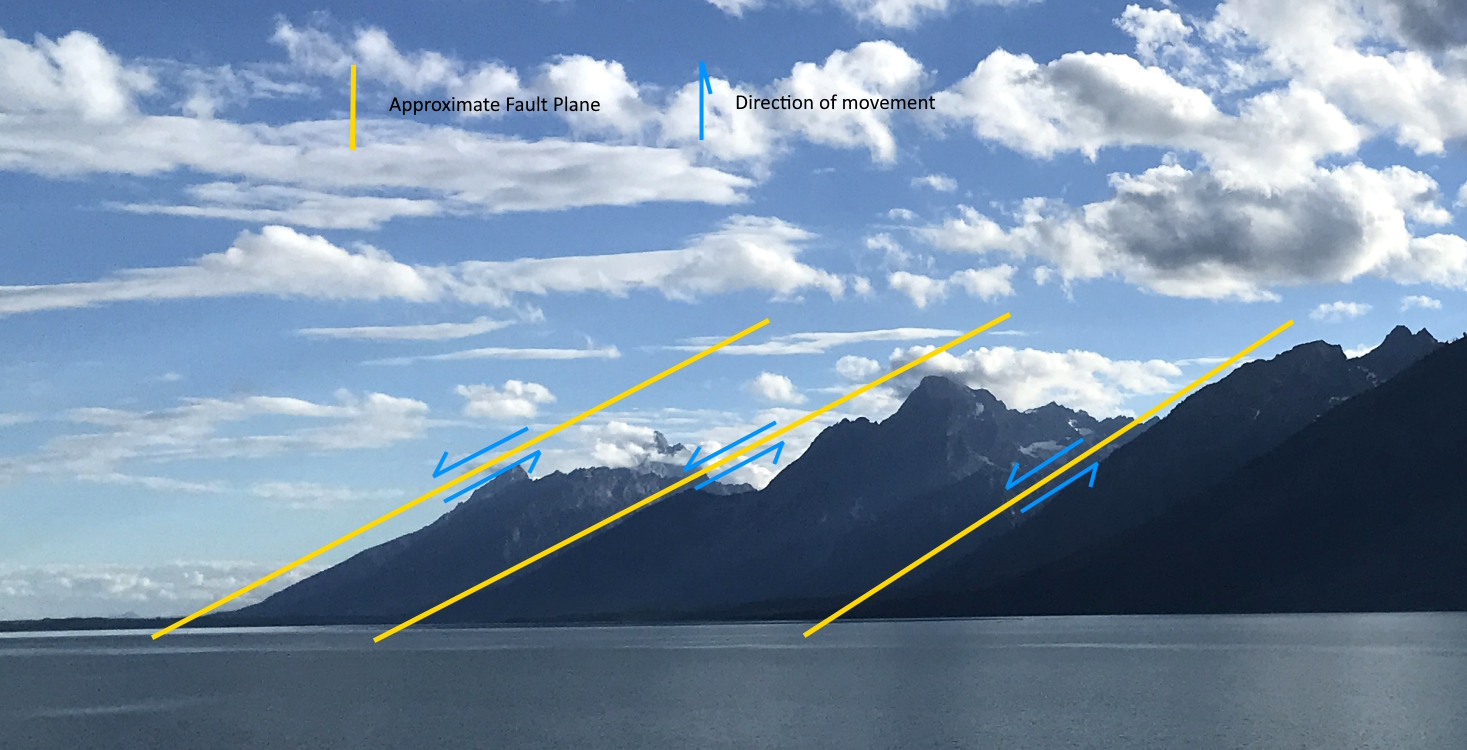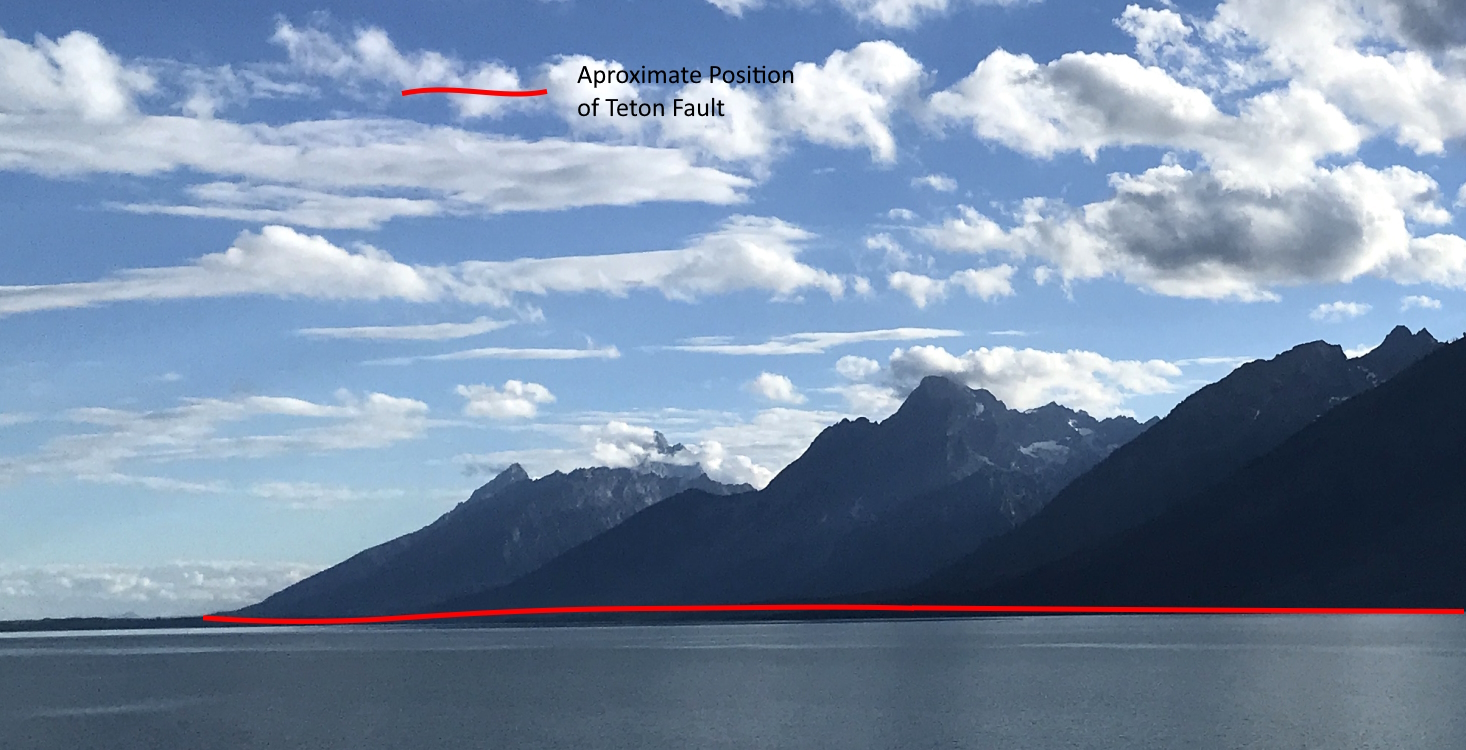
The Tetons
In my last geology post, I gave the basics of normal and reverse faulting, today we will talk about a real world example of normal faulting, the Tetons of western Wyoming. The Tetons are a great example, for a normal fault is responsible for the epic landscape you see today. The main actor in this mountain story is the Teton Fault, which runs along the base of the mountain front. This fault is also the easternmost normal fault associated with Basin and Range extension in this area. The estimated amount of displacement along the Teton Fault is around 5 miles! Because movement has been so great in such a short time (less than 10 million years), the fault plane is still visible above the ground. This has led to numerous faceted spurs, a term I’ll talk about in a later post. The ridges still follow the fault plane in the photo below (Fig. 1). I’ve highlighted the approximate fault plane in the photo below and added the direction of movement to clarify (Fig. 2).


Along the mountain front, at the base, you can almost trace a line of where the block that makes up the Tetons is rising from below the block that the valley rests on (Fig. 3).

The next geology post will cover extensional faulting in one of my favorite places…
Other Places to See Normal Faults
- Wasatch Front, UT (Salt Lake City)
- Just about the whole state of Nevada
- Death Valley National Park
References
- Roadside Geology of Wyoming, D. Lageson and R. Spearing
- Roadside Geology of Nevada, F. DeCourten and N. Biggar
- Grand Teton National Park Visitor Center
- The Science Teaching Staff at BOMUSD

My father’s specialty was faulting. He was a geologist. John K Sales. He wrote some things if you enjoy researching.